Saira immerses herself in the The Unlikely Pilgrimage of Harold Fry, walking with the author Rachel Joyce and finding out about the joys and challenges of community
A few weeks before the The Unlikely Pilgrimage of Harold Fry was released in cinemas across the UK, I joined Emily Rhodes and Rachel Joyce on Emily’s Walking Book Club in Hampstead Heath.
Emily’s Walking Book Club
Following a quick introduction, we set off on the walk. As we wandered, we were encouraged to speak to different people. Every so often, we stopped at a designated point and were given a new discussion prompt by Emily; some related to Harold, some didn’t.
Rachel shared her ideas, insights and reflections on the story. The walk was well attended, mostly by women of different ages: ardent readers and writers, and some walkers.
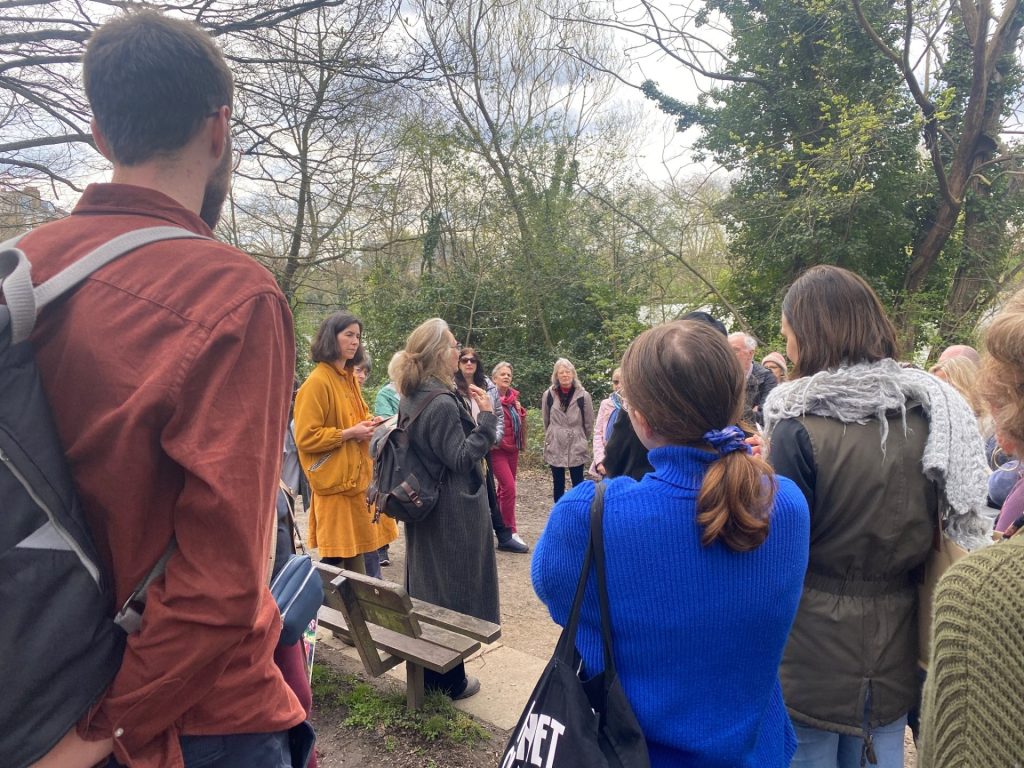
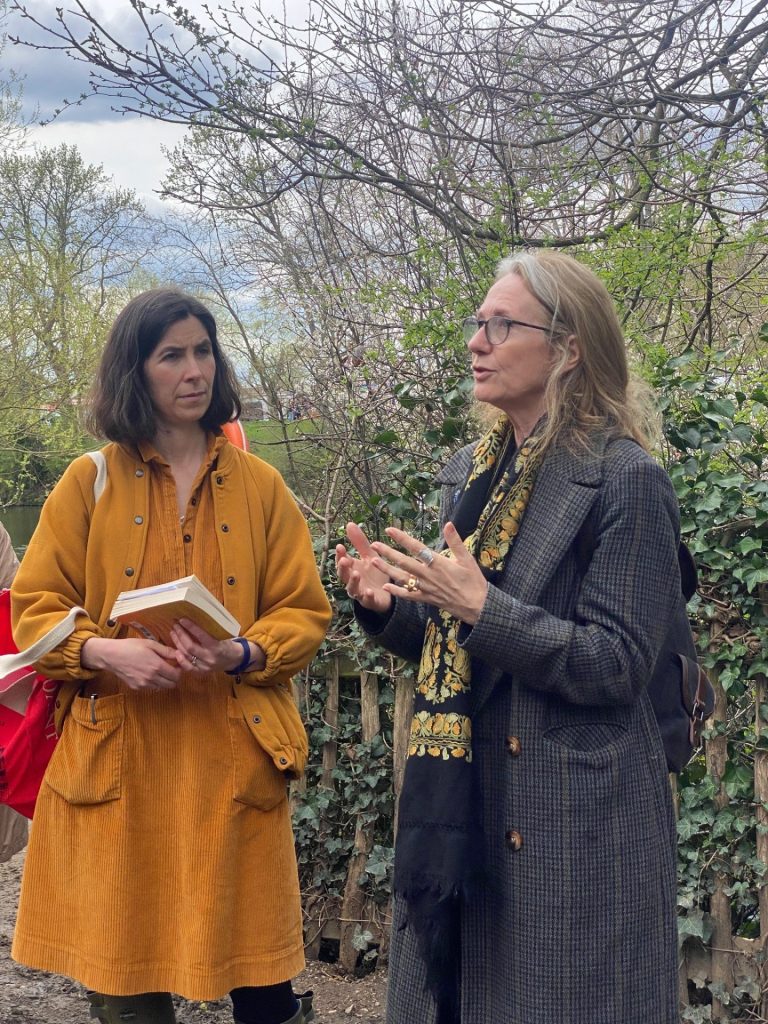
During the afternoon I connected with various individuals – an older woman who’d grown up in North London spoke of walking miles to the Hampstead Fair when she was a little girl. A young petite Asian woman new to London who said she spends most weekends wandering around trying to get to know the place she now calls home. A free-spirited Australian woman who works in advertising but seeks something more creative.
My most memorable encounter was with a former New Yorker named Maggie, a warm, charismatic, visually impaired Jewish writer. She was full of stories. We talked rats and ramblings, the neighbourhoods that make up cities (London and New York) – and of course, we talked about Harold’s journey.
Embarrassingly, I hadn’t yet read the book, but I knew the story. It became richer and more complex the more Rachel spoke of her experiences and connection to the characters. I made a mental note of the things she shared that struck me: deciding to take the train to Berwick-upon-Tweed to witness the filming of the final scene and then coming to realise that she was really there to say goodbye to her dad who had died in recent years, as well as the magic that comes from watching people and being moved by them.
Following on from the book club and a wandering intermission of sorts, we filed into the Everyman Cinema to watch a private screening of the film.
The Unlikely Pilgrimage of Harold Fry
It was deeply sad yet hopeful – the film chronicled Harold’s journey walking 450 miles from Devon to Berwick-on-Tweed to save his friend Queenie. Harold, an ordinary man, was undertaking an extraordinary pilgrimage.
It reminded me of inspiring individuals in the Slow Ways community who had embarked on extraordinary journeys for a purpose; people like Annie, a nurse who walked from Ipswich to Bristol for her premature grandson River, Lizzie who carried her baby 50 miles to her mother’s house partly as protest march against the sanctity of motherhood, and Steve and Sandra, who walked from their home in Bucks to their former homes in the West Midlands using Slow Ways, to raise money for the ultra-rare xeroderma pigmentosum.
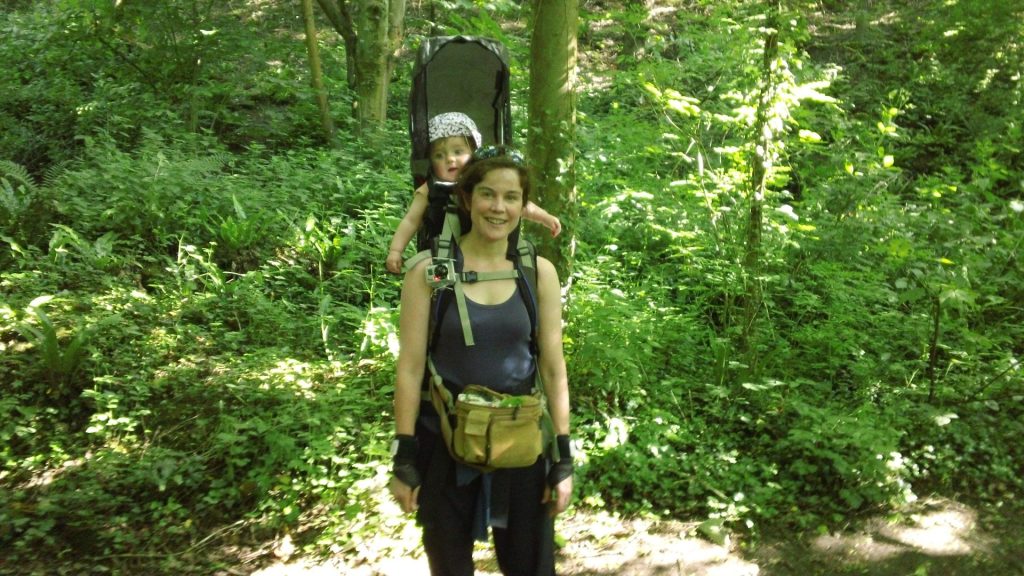
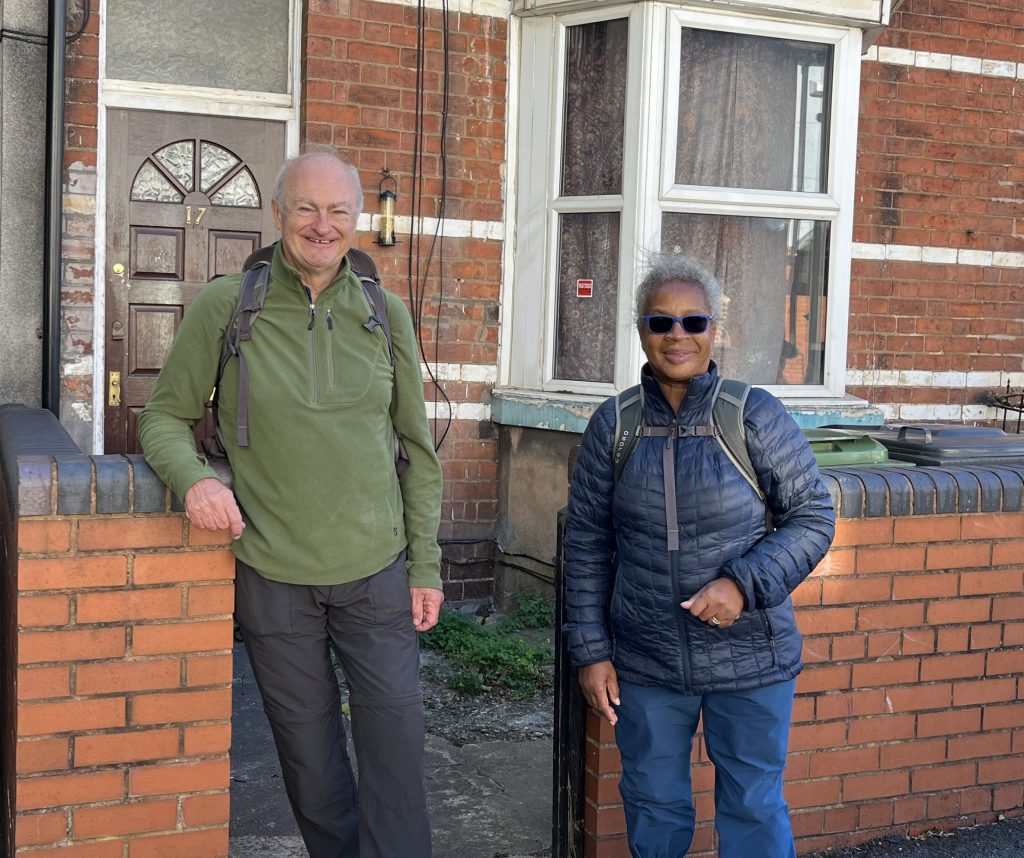
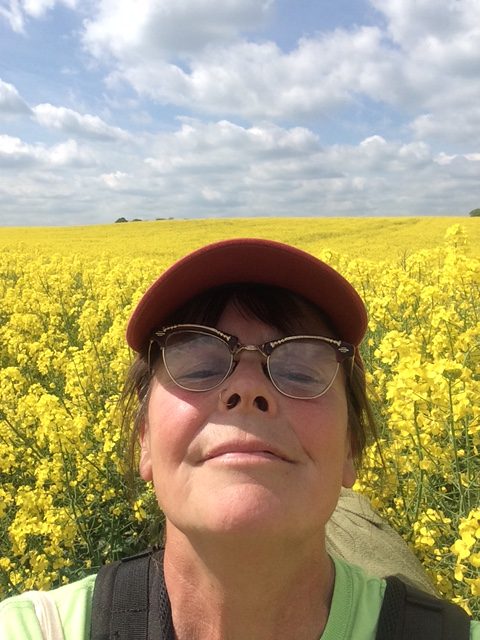
Harold walked for a purpose and took the most direct route, on the way he encountered various people and places – he experienced the joy of community, and its challenges too.
An interview with Rachel Joyce
A few days after watching the film, I interviewed Rachel Joyce. We spoke about Harold’s journey, walking, community and more.
Tell us about Harold?
Throughout, he’s true to the man he is, an ordinary man. Harold isn’t a walker. I wanted to show this through the shoes he wore. He travels light, he undertakes a journey, direct and unplanned, between two places and for a purpose. For his friend Queenie. He travels through urban areas, along motorways and in the suburbs, as well as through the countryside.

His journey takes in the landscapes and cityscapes that you would encounter were you to undertake a similar journey. The fact that he is travelling light, that’s he’s a pilgrim traversing transitory spaces in which nobody belongs, opens him up to passers-by. People can share their stories and secrets with him.
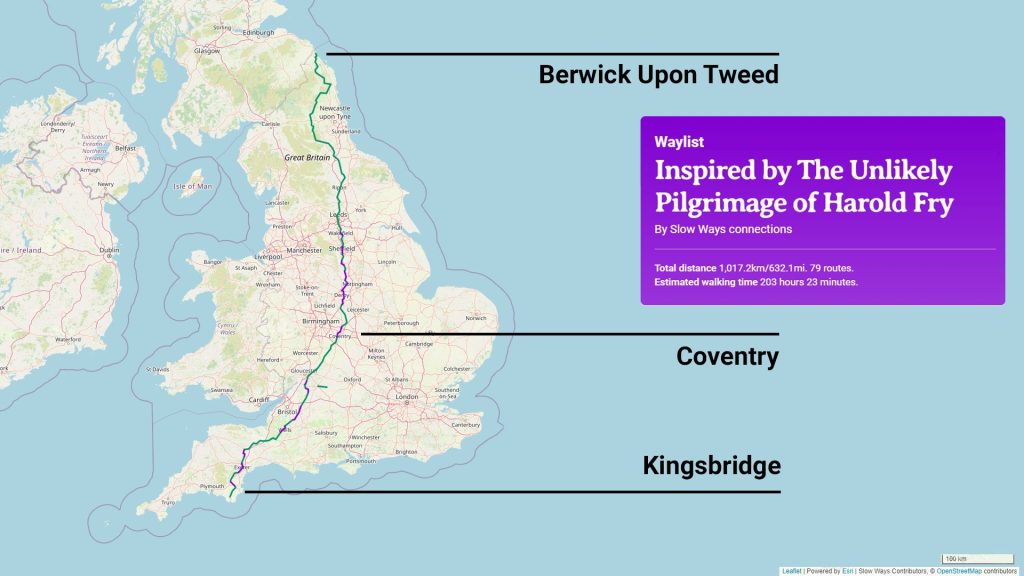
I loved that the film draws light upon the way we inspire, or touch people’s lives, be it knowingly or unknowingly. Meeting the people he met was integral to Harold’s healing journey. We might not be able to save people but we can provide comfort through our words, through our acceptance of them. How important was community to Harold’s journey?
I’m a big believer of community. It’s so important to honour community. It’s sad to see so many churches, community centres and libraries closing down. It’s wrong. I’d notice (in my library), that often people weren’t coming in for books. They were lost and wanted a place to linger. The library, and other meanwhile spaces, offer that. Our experiences of covid showed just how important community spaces are. By taking these places away, people don’t encounter one another. We put up more boundaries, we don’t understand one another and this is dangerous, it’s counter to who we are.
I couldn’t agree more. This comes across beautifully on Harold’s journey, the idea that people want and need to connect, to be seen and heard. That people want to be part of a community. And my last question: if you could walk between any two places in the UK what would those places be and why?
I think I’d walk between Tewksbury and Shrewsbury. I’m interested in places with a spiritual connection, places that are rich in possibilities and mystery. I’m also interested in urban places where the streets are invested with more meaning and greater connections. I like churches… I like the idea of walking to get lost and not knowing where you were going…
Thank you so much Rachel!
You can buy The Unlikely Pilgrimage of Harold Fry book here (Amazon / Hive / Bookshop). Harold Fry is now out in cinemas across the UK. We highly recommend watching!